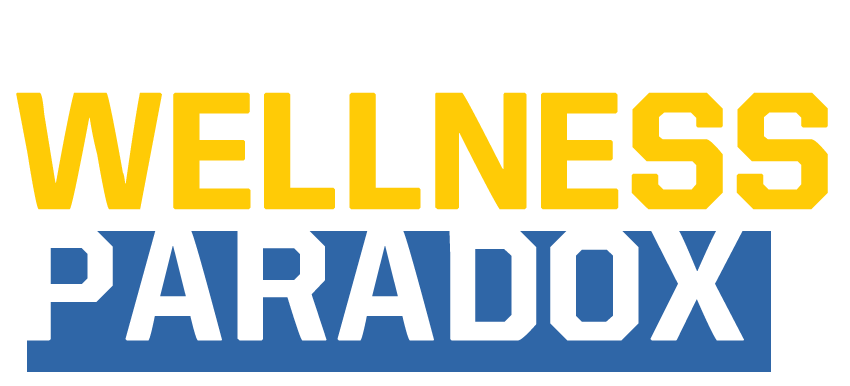If you’re reading this, there is a good chance that the fitness industry has failed the vast majority of the people you know. I can make this statement with a great deal of confidence given that less than 20% of Americans go to gyms and fitness centers. Some in the fitness industry might find this statistic surprising, but the objective reality is that the fitness industry has failed the vast majority of Americans, especially the ones that need the industry’s help the most. Let’s explore why together, and most importantly, what needs to be done to change it.
UNDERSTANDING THE FITNESS INDUSTRY
According to several industry sources, including the trade
association for the fitness industry, IHRSA,
the industry has hovered around 15-20% market penetration for the past 30+
years. This is a remarkable statistic given the growth of the industry during
that same period of time. According to Forbes,
the industry has seen significant growth in terms of revenue and organizations,
particularly over the past decade (COVID declines notwithstanding).
This presents an interesting paradox, the industry hasn’t
necessarily seen a significant increase in market share, yet there are more
fitness businesses and those businesses are making more money than ever. This
certainly could make the casual observer wonder, what gives?
The answer is clear to keen observers. The fitness industry
has gotten very good at making the fit, fitter; and the healthy, healthier.
This has essentially resulted in fitness consumers hopping from one gym to
another, in the hopes of lower prices, better amenities, or both. The industry
isn’t serving more people, it’s just serving the same people, better.
THE FITNESS INDUSTRY’S FAILURE
The fundamental failure that exists here is borne out in statistics
from the CDC suggesting that less than a quarter of Americans meet the
recommended guidelines for both aerobic activity and muscle strengthening. It
is clear this is a strong driver of disease and reduced quality life, with
physical inactivity costs expected to exceed $27 billion annually, over the
next decade, according to the World
Health Organization.
The bottom line is, although the fitness industry is growing
bigger and more profitable than ever, it is not serving the people it needs to
help the most – the 75% of Americans that don’t meet the CDC’s guidelines. This
has to change, not only if we are going to control our ever-escalating
healthcare costs; but, more importantly, if the fitness industry is truly
going to help all people lead healthy, happy, and functionally productive
lives.
Despite the doom and gloom, there are some positive steps
the industry can take to serve the broader American population. In fact, these
steps are already underway in pockets of the industry.
I wrote about a framework for the industry to implement in
an article entitled The
Five Steps to Professionalize the Fitness Industry. That article was
written decidedly for industry professionals. Below I will outline more
practical implications for industry professionals. My hope in doing so is our
industry will build more trust and equity with the American public. In doing
so, we have the opportunity to improve public health and to grow our
businesses.
REDEFINING GYM & FITNESS CULTURE
For decades the primary issue that has plagued the fitness
industry is that gym and fitness culture has been very body composition, or
weight, centric. Much of the industry’s imagery and messaging has been around
weight loss, achieving a beach body, and before/after photos. This approach has
very much spoken to the 15-20% of Americans that already go to gyms and fitness
centers.
Not that improving weight and body composition is a
misguided goal in the least, it’s just very complicated. It’s not only
complicated biologically (as there is a strong genetic component to body
weight), it’s even more complicated psychologically. Many people who attempt to
lose weight feel they must do so to meet some societal standard. There is
simply a lot of guilt and shame associated with body weight, and it’s
pervasive. Many people experience weight
stigma, and (sadly) the fitness industry has perpetuated it for decades.
The industry has implied, in many cases not so subtly, that
you should workout because you should look a certain way. Should
is doing a lot of work in that sentence. Who said what you should look
like? In many cases it’s people who have the genetic good fortune to look a
certain way, they deem as superior.
The irony of the fitness industry’s misguided overemphasis
on body composition and weight, is that as an industry, it’s failed to produce
positive outcomes when it comes to weight loss and body composition improvement
for the vast majority of people (more on outcomes below).
The fitness industry is in desperate need of redefining the
culture associated with gyms, fitness centers, and exercise. The reality is,
most people want to exercise to feel better, function better, and take control
of their health. If they lose weight, or look better, from exercise that
certainly is a nice bonus, but it’s not the driving force for most people to
exercise. In fact, according to Club
Industry, 87% of people exercise to improve their mental wellbeing.
Collectively, the fitness industry needs to recognize that
if they don’t embrace this shift away from a culture of weight and looking
better, and towards a culture of feeling and functioning better, we’re never
going to help the people who need it the most.
It’s time to focus on feeling and function, not looks.
INCREASING INCLUSIVITY IN THE FITNESS INDUSTRY
Given the culture I laid out above, it’s not surprising that
much of the imagery, messaging and hiring practices of the fitness industry has
been more exclusive, than inclusive. While DEI initiatives are starting to make
some inroads in improving inclusivity, it’s not nearly dramatic enough to make
a measurable difference.
Inclusivity is really all about safety. People want to go
places where they feel safe, a big part of that is feeling like they belong.
This is where the fitness industry has failed on the most fundamental level. If
you look at the imagery used by nearly fitness organizations it tends to be
disproportionately young, very fit, and white. This means that if you’re
anything other than young, very fit, and white you’re told implicitly by this
imagery you don’t belong.
Diversity in age, gender, race/ethnicity, body shape/size,
and fitness level are absolutely critical to making people feel safe from the
second they engage with a fitness brand. As founder/CEO of the fitness company Applied Fitness Solutions, my fundamental rule
of marketing is no stock images. Fitness stock images tend to be mostly young,
fit, and white. They don’t reflect the population we need to serve. I’ve always
hoped that when people look at our website, their first reaction is a feeling
of safety because they see people that look like them.
This diversity must extend beyond just the imagery on a
website or social media ad, it has to extend to hiring practices as well.
Traditionally, the fitness industry has hired everyone from fitness
professionals to desk staff, who are – unsurprisingly – young, fit and white.
It is difficult to create a truly safe and inclusive environment for people of
varying ages, ethnicities, body shapes/sizes, and fitness levels if everyone
that works in a gym or fitness center is not as diverse as the population they
hope to serve. The industry needs to adopt hiring practices that are more
diverse and inclusive. Doing so will create a level of safety, trust, and
inclusivity that will engage the broader American public.
It’s time to implement diversity practices in marketing and
hiring. This will make our industry more inclusive and better positioned to
help more people achieve their goals.
MEASURING & PRODUCING HEALTH/FITNESS RESULTS
Everyone exercises for a reason. As I mentioned above, this
reason isn’t necessarily to look better. Most often it’s to feel better,
function better, prevent or treat disease/injury, and have more control over
health. All of these are results, or outcomes, that can be measured over time
to track improvement. This is quite possibly the area the fitness industry has
failed the most.
Sadly, because of the overemphasis the industry has placed
on body composition and weight, most people have evaluated the success of their
fitness routine based on the number on the scale. This is absolutely the wrong
level of measure to consider.
Weight fluctuates to a significant degree, especially when
someone starts an exercise program. In fact, just as a result of fluid changes
in the body, weight can increase in the first couple of weeks after starting an
exercise program. Regardless of the complexity of what happens, one thing is
clear, the scale is a poor indicator, at best, of the changes that occur from
an exercise program.
Looking at improvements in holistic fitness (including
mobility/flexibility, strength, endurance, aerobic capacity, etc.) is the only
true way to know if your efforts are producing positive results. Going a step
further, improvements in mental health/wellbeing can also be quantified. All of
this is critical to ensure you have a good perspective on your efforts and what
they’re producing.
This is where the fitness industry can provide a lot of
value to consumers. By using trained professionals to measure fitness levels at
baseline and periodically throughout an individual’s journey, the industry can
provide an objective way to monitor progress and keep people motivated.
Beyond the ability of these qualified professionals to
provide measurement, they should be involved in program development and
implementation. Many people who don’t perform an exercise routine have some
degree of fear or apprehension about starting. This could be due to general
uncertainty and lack of confidence, or it could be a result of a medical or
orthopedic condition. This is where a qualified fitness professional can make
all the difference in the world.
By qualified, I don’t mean the personal trainer who has
taken a weekend workshop and passed an exam online. The person you’re looking
for is a degreed and nationally-certified Fitness Coach (for more on the
difference between a Personal
Trainer and a Fitness Coach, go here). Their degree should be in Exercise
Science, Kinesiology, or something related, from a four-year institution. They
should also be a registered exercise professional through the US Registry of Exercise Professionals, ideally
with an American College of Sports
Medicine certification.
THE FITNESS INDUSTRY CAN SUCCEED WHERE IT HAS FAILED
If you’ve gotten to this point in the article, it would be
fair if you felt equal parts frustrated and hopeful. It is frustrating the
fitness industry has failed to meet the needs of so many people for so long.
Truthfully, the industry has no one to blame but itself, for all the reasons I
laid out in this article.
At the same time, you might feel hopeful, if what I said in
this article resonates with you. There is a growing movement in the industry to
embrace the topics we’ve discussed here. There are organizations that are
interested in moving beyond the 15-20% of the American population they’ve
always served. Those organizations adhere to the principles and practices I’ve
laid out in this article. The fitness industry can succeed, where it has failed,
much like the people we serve, we just need to put in the work.







Comments
Post a Comment